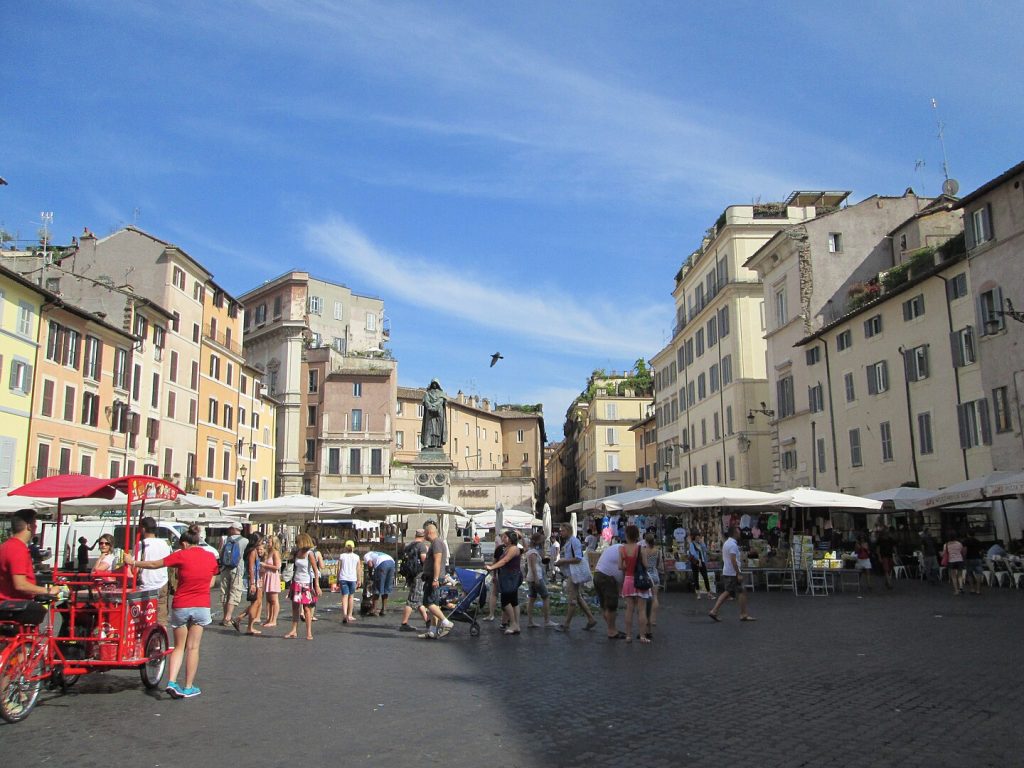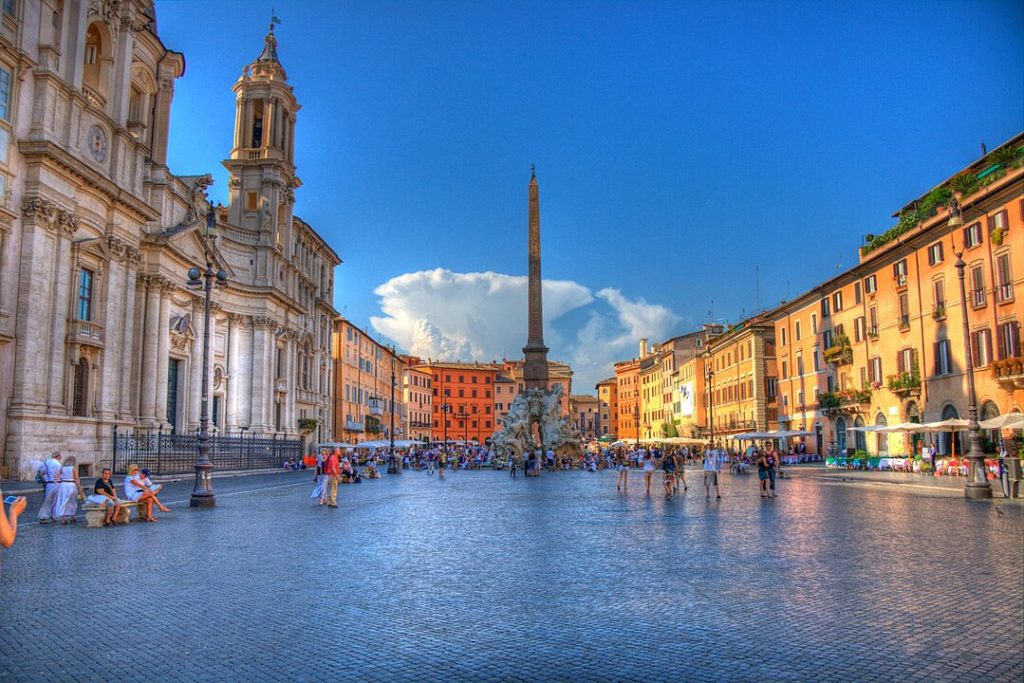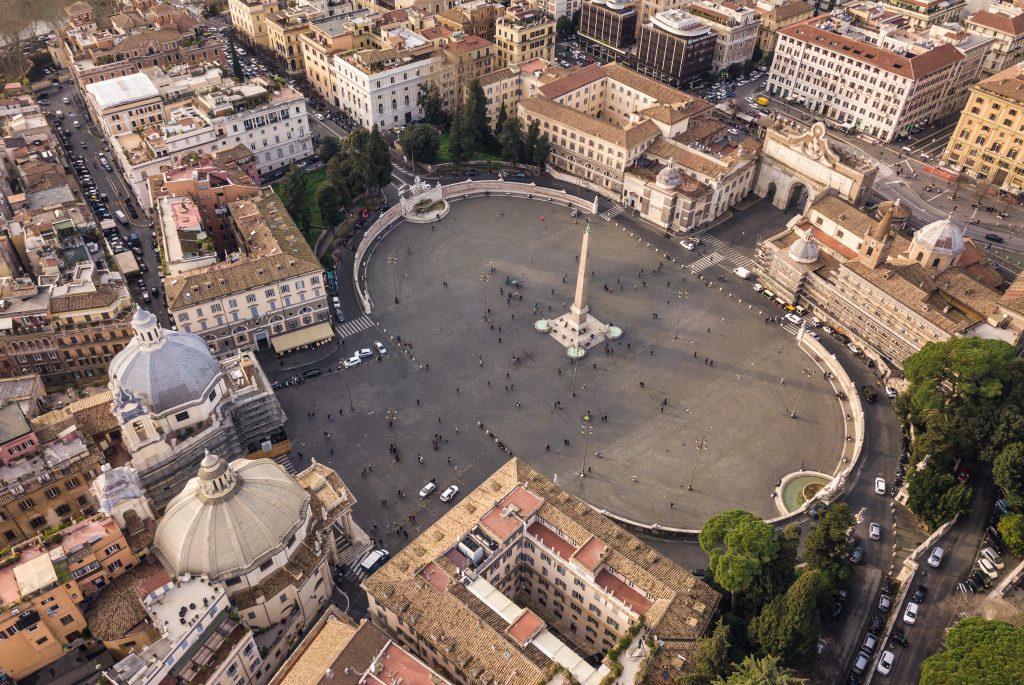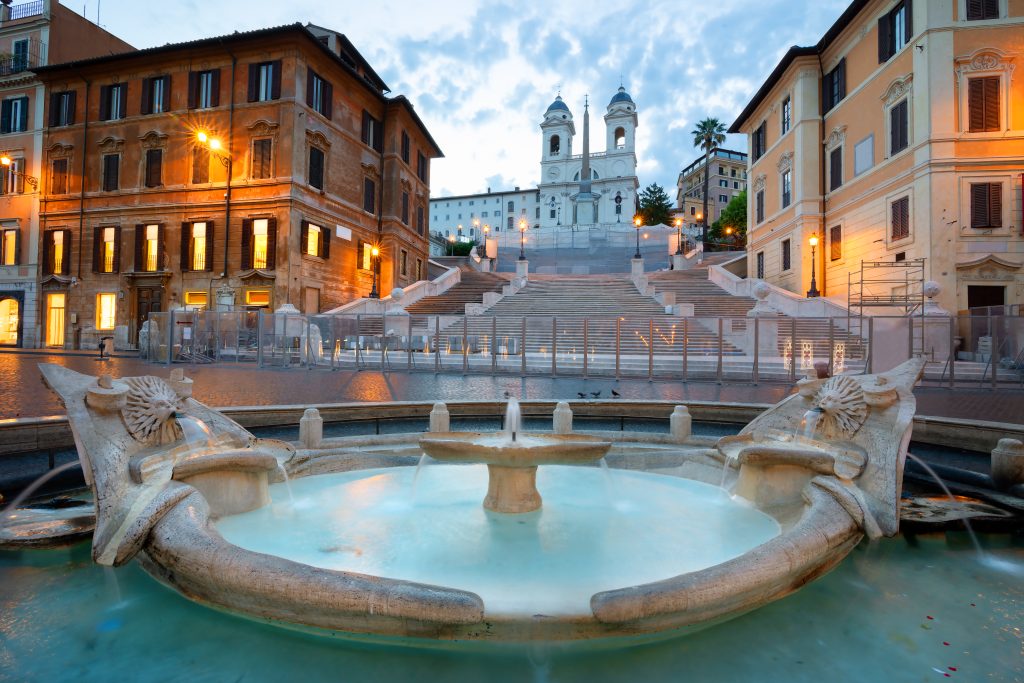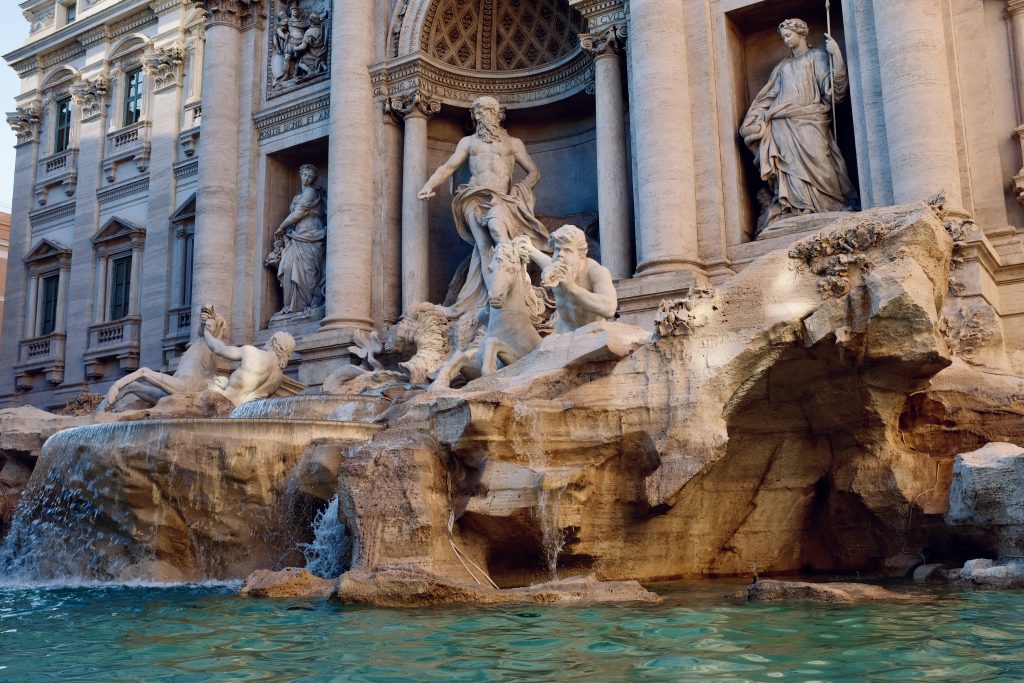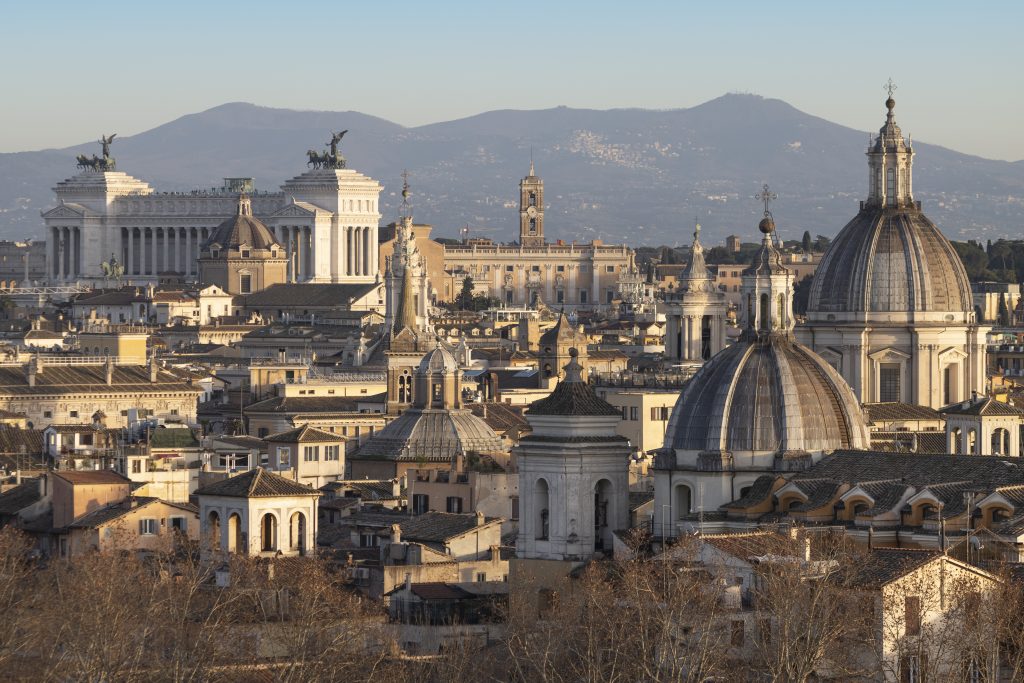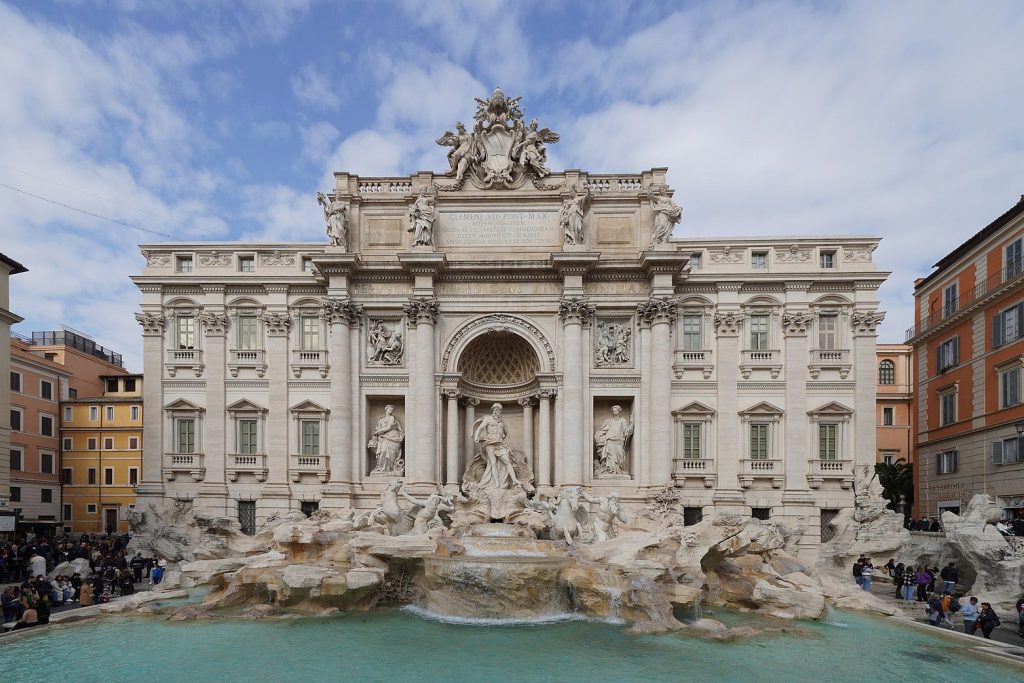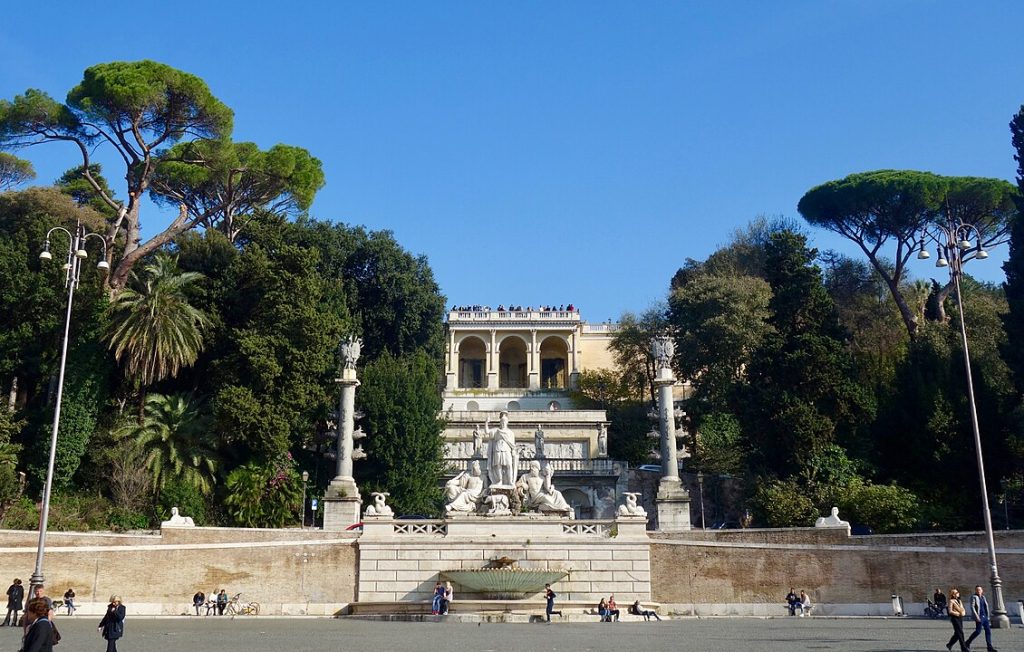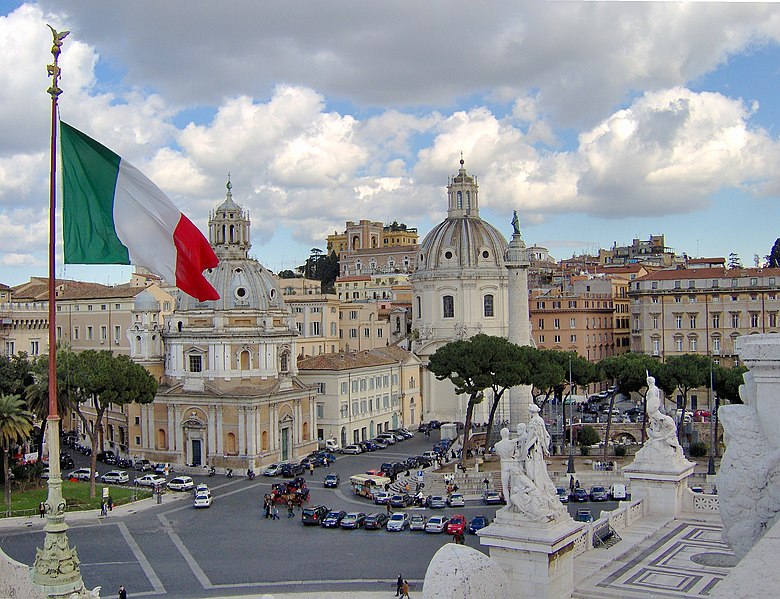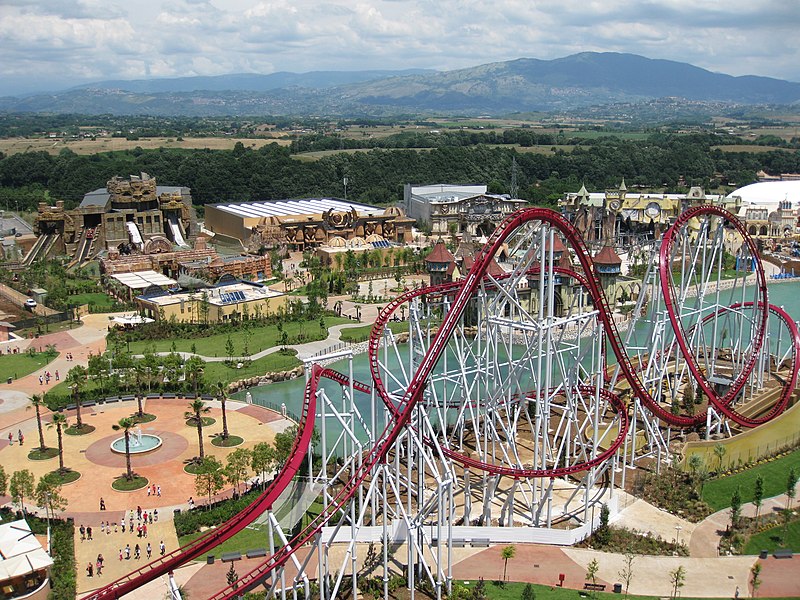- 1️⃣ Introduction
- 2️⃣ St. Peter's Square today - the heart of Christianity
- 3️⃣ Ancient times - Agrippina's gardens and Nero's circus
- 4️⃣ Martyrdom of St. Peter and the creation of the first basilica
- 5️⃣ Medieval times - pilgrimages and the changing face of the square
- 6️⃣ Renaissance and Baroque - great remodels and the genius of Bernini
- 7️⃣ Leo XIV and the square as a symbol of the Church in the modern world
- 8️⃣ Symbolic and spiritual significance of the square over the centuries
- 9️⃣ St. Peter's Square in art, literature and media
- 🔟 Summary - from the place of execution to the center of Christianity
- 📍 Attractions in the area
- 🔗 Articles similar in subject matter
- 🔥 Most popular articles in the last week
- 💬 Opinions
1️⃣ Introduction
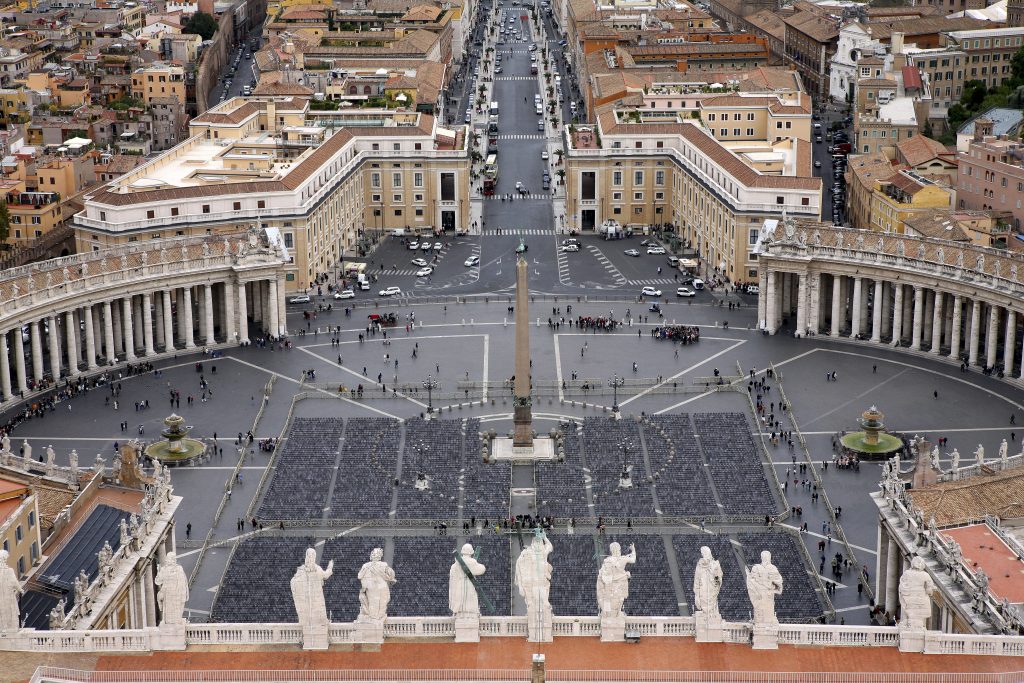
St. Peter's Square is today one of the of the world's most recognizable places - the heart of the Vatican and the main point of pilgrimage for Catholics from around the globe. But before it became a symbol of the faith and power of the papacy, it witnessed very different events.
It is here, in the Nero's circus, according to tradition, St. Peter died. A basilica was built on his tomb, and around it - over the centuries - took shape the square, which today impresses with its monumental colonnade and unusual symbolism.
In the following chapters, we will look at the transformation of the place -. since the persecution, through the era of the great popes and artists, to the the modern Vatican and the importance of the square in today's world.
2️⃣ St. Peter's Square today - the heart of Christianity
🦅 The square that saw Mussolini and Michelangelo
👉 Piazza Venezia - the monumental heart of Rome
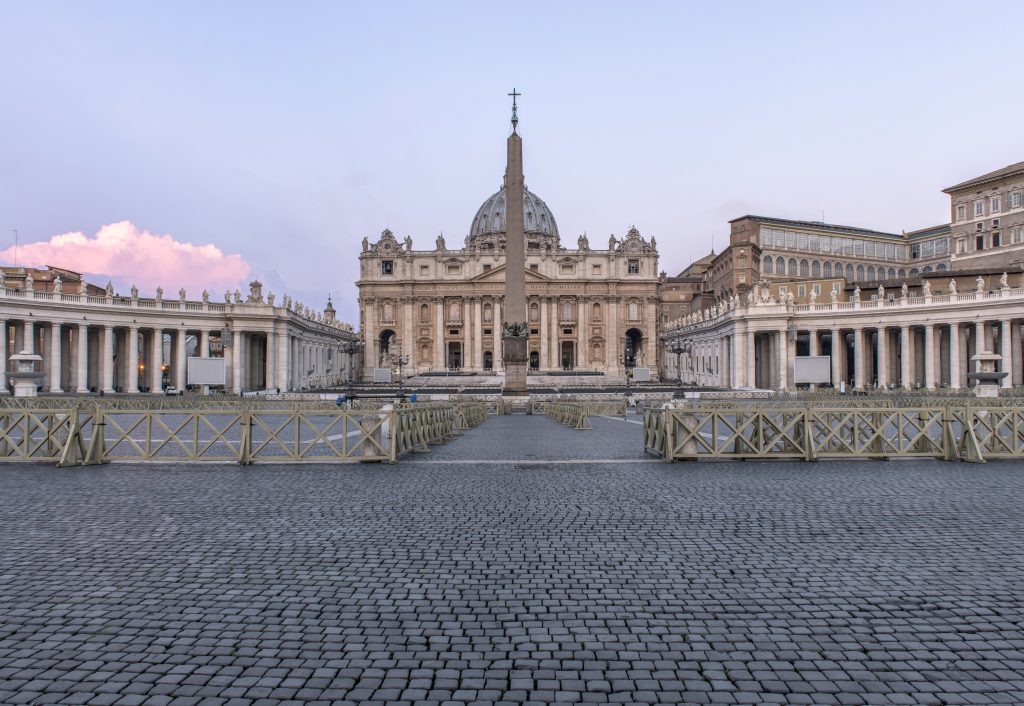
Today St. Peter's Square is not only an architectural gem, but above all a living spiritual center Catholics from all over the world. It is a space where faith meets history and the everyday meets the extraordinary.
💠 The most important functions of the square today:
- Papal masses and celebrations
The square regularly becomes the stage for events of global significance, such as Christmas, Easter and beatifications. - Angelus with the Pope
Every Sunday and holiday, the faithful gather to hear the Holy Father's words from the window of the Apostolic Palace. - Symbolic "arms of the Church"
Bernini's colonnade encompasses the square, creating a sense of community and invitation - for believers and the curious alike. - A place of daily prayer and reverie
Despite the crowds, the square retains its sacred atmosphere. In the evening, with the basilica illuminated, there is an almost mystical silence.
💠 Architectural and spiritual center:
- In the center of the square is the obelisk from Heliopolis, which still remembers the days of the Roman emperors.
- The surrounding buildings - basilica, palaces and fountains - form a cohesive whole of great artistic value.
- The square also serves as a A symbolic bridge between the Vatican and the world - This is where the pilgrimage of faith often begins.
3️⃣ Ancient times - Agrippina's gardens and Nero's circus
🎨 Baroque in full swing
👉 Piazza Navona - the most beautiful square in Rome?
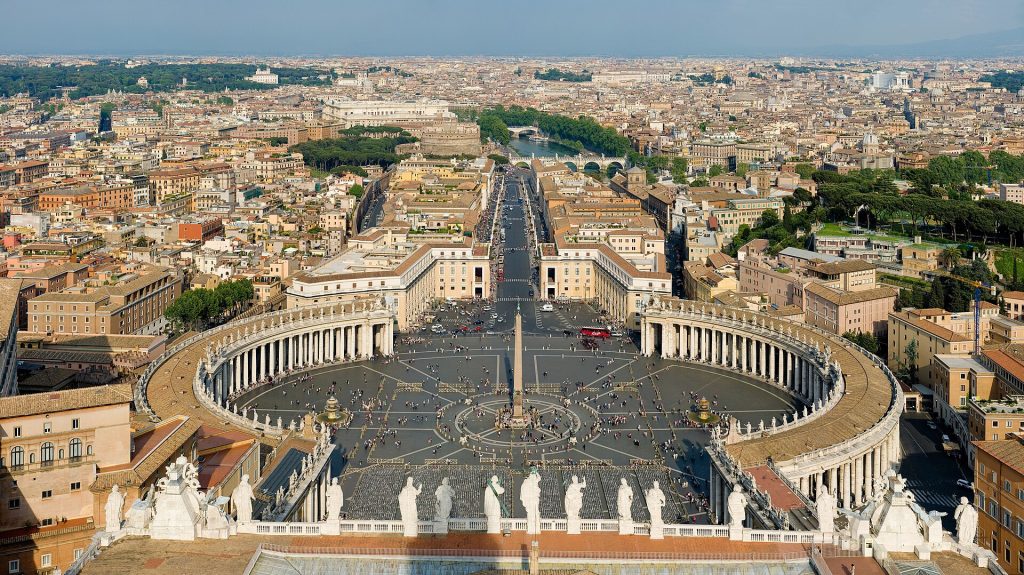
Before St. Peter's Basilica was built, the area of today's square looked very different. It was not yet a place of prayer, but belonged to the world of Roman aristocracy and emperors.
💠 Agrippina Gardens
In the 1st century AD, the area was owned by Agrippina the Elder, mother of Emperor Caligula. It was home to a luxurious villa surrounded by gardens, overlooking the Tiber River. Although located outside the city walls, the site was prestigious and valued by the Roman elite.
💠 Nero's circus and the death of St. Peter
Caligula began the construction of a circus, which Nero greatly expanded - an arena for chariot racing and public spectacles was established here. It was this circus that became the site The martyrdom of St. Peter, crucified with his head down. According to tradition, his cross stood near the obelisk that today sits in the middle of the square.
💠 Birth of a place of worship
After the execution, the apostle's body was laid to rest on the Via Cornelia - one of the Roman roads running past the circus. The tomb quickly began to attract early Christians. Although the setting was still secular and full of the cruelty of imperial Rome, the site began to take on spiritual significance, becoming the beginnings of a later shrine.
4️⃣ Martyrdom of St. Peter and the creation of the first basilica

St. Peter's death began the transformation of the site from an arena of persecution to the spiritual center of the nascent Church. Although for the first decades the apostle's tomb was outside the main circulation of religious life, over time it began to attract more and more of the faithful who wished to honor his memory.
💠 St. Peter's Tomb as a pilgrimage destination
The early Christians treated Peter's burial site as sacred. Despite the lack of monumental buildings, the site was gaining spiritual significance - inscriptions appeared, traces of the presence of believers, and the tomb was surrounded by increasing reverence.
💠 Constantinian Basilica
In the 4th century, Emperor Constantine the Great, the first ruler of the Empire to recognize Christianity, decided to erect a monumental temple over Peter's tomb. The new basilica, built between 319 and 333, was not only to protect the burial site, but also to become a new center of religious life.
💠 The architecture and significance of the new temple
The Constantinian basilica had five naves, an atrium and an altar placed directly over the tomb of St. Peter. From the very beginning it attracted crowds of pilgrims, becoming a symbol of the victory of Christianity over paganism. This very moment was the beginning of the The transformation of the place of martyrdom into a space of faith, worship and hope.
5️⃣ Medieval times - pilgrimages and the changing face of the square
💧 The world's most magical fountain
👉 Trevi Fountain - flip a coin and return to Rome
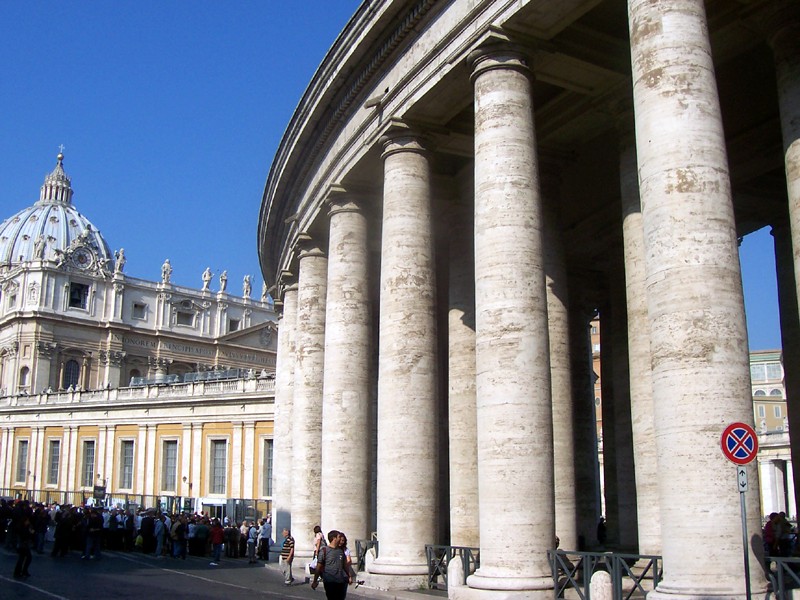
As the centuries passed, St. Peter's Basilica and the surrounding area became increasingly important to the Christian world. In the Middle Ages, the square did not yet resemble what we know today - it was more of an irregular temple setting, with buildings of a practical and pilgrimage nature.
💠 Medieval basilica at the center of worship
Although the Constantinian-era basilica was in technical decline over time, its spiritual role only grew. Thousands of pilgrims from all over Europe headed to St. Peter's tomb, often after months of wandering. Here the faithful sought forgiveness, blessing and spiritual support.
💠 Surrounding the basilica and the square
Numerous shelters, monasteries, houses for clergy and aid stations for newcomers were built around the temple. The square did not yet have a fixed form - it was an open space, often crowded, full of stalls and people. Its character was more practical than representative.
💠 Symbolism and politics
During the Middle Ages, the political importance of the place also grew. Pilgrimages to Rome were an expression of unity with the papacy, and the presence of the faithful from different countries strengthened the prestige of the Holy See. Over time, it was here that the spiritual center of the Christian world began to be seen - despite the simple conditions and lack of a monumental setting.
6️⃣ Renaissance and Baroque - great remodels and the genius of Bernini
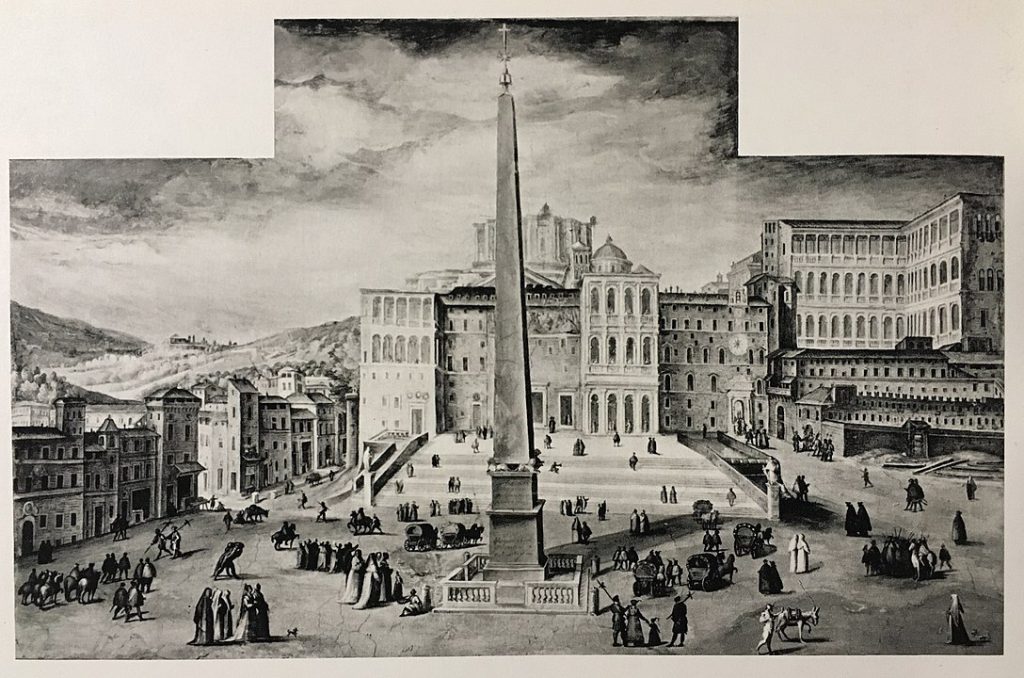
The collapse of the medieval order and the arrival of the Renaissance brought a new outlook on art, architecture and the role of the Church. St. Peter's Basilica - an aging and deteriorating structure from the time of Constantine - no longer suited the ambitions of the popes and the new spirit of the age.
💠 Basilica reconstruction - a new beginning
In 1506, Pope Julius II initiated the construction of a new temple, which was to be more powerful, beautiful and worthy of the tomb of St. Peter. The work took more than a century and involved the greatest artists of the era: Bramante, Raphael, Michelangelo i Carla Maderna. Their work was not only a monumental dome, but also new proportions and momentum unprecedented in Europe.
💠 The square in Bernini's hands
In the 17th century, Pope Alexander VII entrusted the Gianlorenz Bernini designing a square that would match the size and symbolism of the new basilica. Bernini created a vision of a colonnade resembling the arms of the Mother Church, surrounding the faithful. St. Peter's Square has gained its distinctive oval shape, with an open arm welcoming pilgrims.
💠 Harmony of art and ideas
The whole - basilica, colonnade, obelisk and fountains - has been subordinated to one idea: Church unity, faith and beauty. The square ceased to be just a utilitarian space and became a stage for spiritual events, religious manifestations and papal speeches. Thanks to Bernini, the place acquired a timeless form that still delights today.
7️⃣ Leo XIV and the square as a symbol of the Church in the modern world
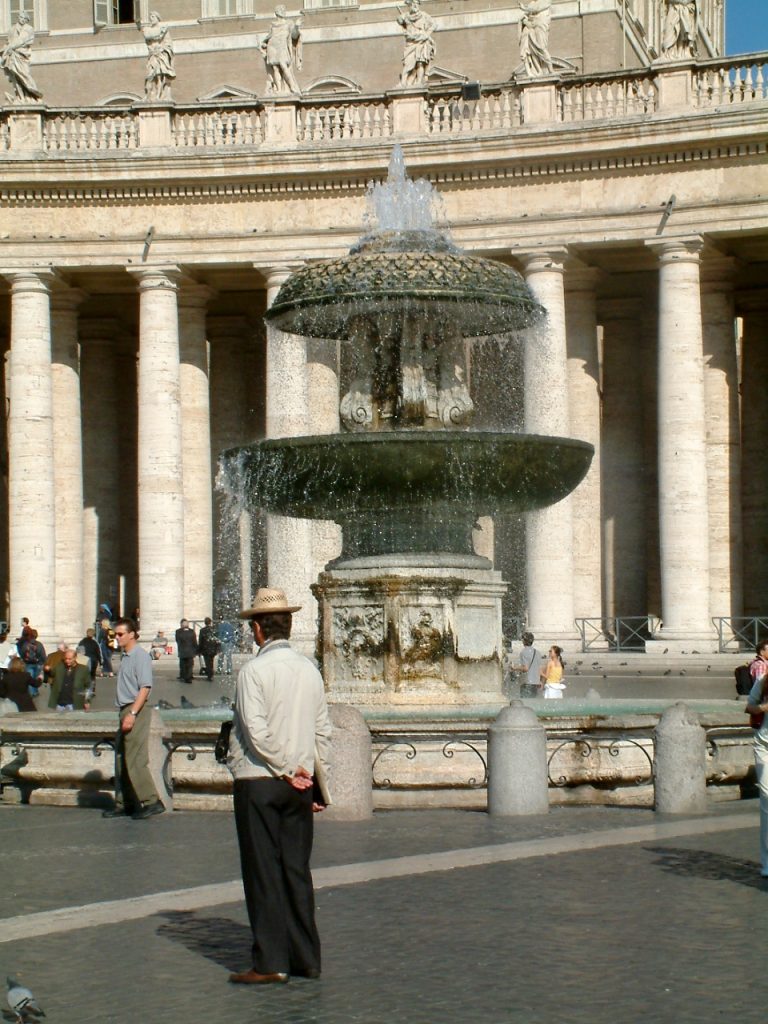
The 19th and 20th centuries brought rapid changes - both political and social. In this new world St. Peter's Square gained not only religious significance, but also symbolic and media significance. It witnessed changes that redefined the relationship between the Church and the secular world.
💠 From loss of power to spiritual leadership
After the unification of Italy and the loss of the ecclesiastical state, the Vatican became an enclave, and the popes - for decades - did not leave its walls. The situation changed only in 1929, when the signing of the Lateran Treaties, recognizing the independence of the Vatican. The square then became a symbolic "border" - between spiritual independence and the secular outside world.
💠 The pontificate of Leo XIII and his successors
Although Pope Leo XIII was still a late 19th century figure, it was during his pontificate that the Church's modern dialogue with the new world began: capitalism, science, labor rights. St. Peter's Square ceased to be just a place of pilgrimage - it became the scene of statements about the global moral and social reach.
💠 Square as a window to the world
In the 20th and 21st centuries, events from the square were followed by millions: inaugurations of pontificates, beatifications, masses, speeches by St. John Paul II, Benedict XVI or Francis. Thanks to television and Internet broadcasts St. Peter's Square has become a unifying place for the faithful around the world - regardless of borders, language and origin.
8️⃣ Symbolic and spiritual significance of the square over the centuries
St. Peter's Square is not just an architectural space or a place for liturgical gatherings. Its significance goes far beyond the walls of the Vatican - it is a universal symbol, which appeals to believers and non-believers, clergy and laity, residents of Europe and distant continents.
💠 A land steeped in history and sacrifice
From the very beginning, the square was associated with martyrdom - it was here, according to tradition, that St. Peter died. His tomb became the reference point for the entire space. Each stone of the square symbolically reminds us of the roots of Christianity - of sacrifice, faith and hope.
💠 Architecture as a message
Bernini's colonnade is not only stunning in form - it also carries deep meaning. Its outstretched "arms" symbolize the Church hospitality, which wants to embrace all people, regardless of past, nationality or beliefs. Even the obelisk, formerly pagan, has been transformed into a Christian sign of faith victory.
💠 Spiritual center of the community of believers
The square is not just a backdrop for papal celebrations. For many pilgrims, it is the culminating moment of their spiritual journey - a place of prayer, recollection and often tears of emotion. In historic and dramatic moments (such as the assassination of John Paul II) it also became a space of solidarity and unity.
9️⃣ St. Peter's Square in art, literature and media
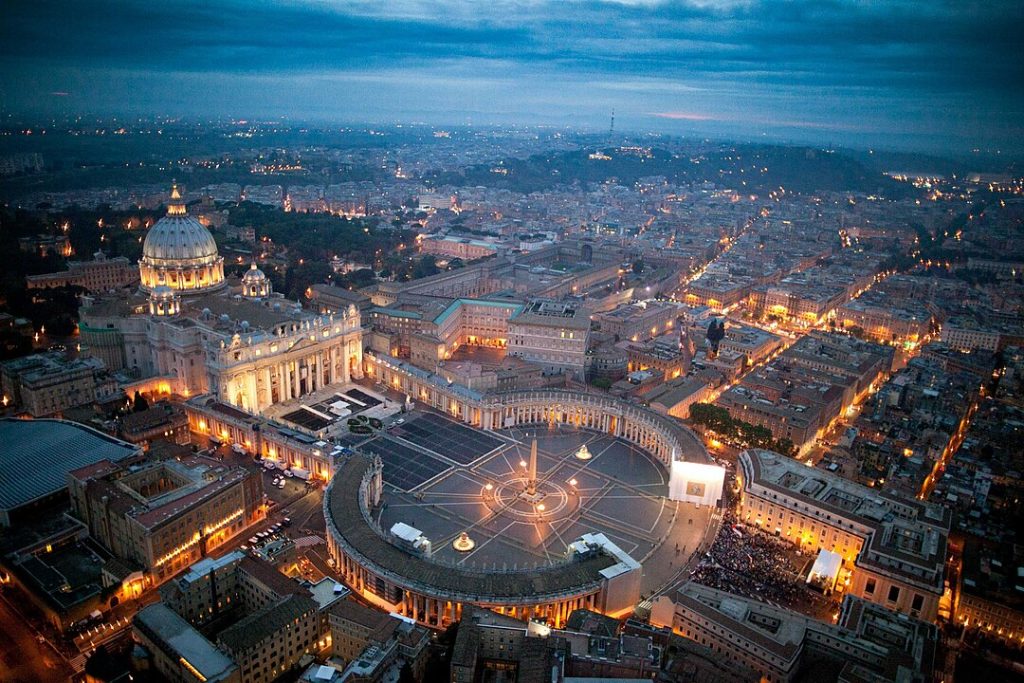
St. Peter's Square is not only a religious and historical site - it is also a cultural motif, which has inspired artists, writers, filmmakers and journalists for centuries. Its monumentality, symbolism and presence at key historical moments have made it a permanent part of the collective imagination of the West.
💠 Inspiration for art and painting
Since the Renaissance, the square has been depicted in engravings, paintings and frescoes - often as a backdrop for religious scenes or spiritual allegories. Artists were particularly attracted to the Bernini's colonnade, the majestic facades of the basilica and the crowds of faithful gathered around the obelisk. The square was depicted as gateway to eternity, the open space between heaven and earth.
💠 Presence in literature
The square has also appeared in literary works - from the spiritual memoirs of pilgrims to the diaries of papal secretaries to contemporary novels. In books such as Angels and demons Dan Brown acts as the scene of dramatic events in which the Sacred and profane clash at the heart of Christianity.
💠 The square in the eyes of the cameras and the world
In the media age, St. Peter's Square has become a global symbol. Broadcasts from the Vatican - papal blessings, feasts, conclave announcements - hit the screens of millions of people. Its sight has become a hallmark of the Vatican, as well as a a universal symbol of spirituality in a world increasingly dominated by image.
🔟 Summary - from the place of execution to the center of Christianity
St. Peter's Square in Rome is a place that uniquely combines history, faith, culture and identity. Its history is not only a story of architectural changes or papal decisions - it is also a symbolic journey from tragedy to hope.
💠 From circus to sanctuary
Beginning as the site of the imperial gardens and circus, the square witnessed the brutal persecution of the first Christians. The death of St. Peter - right next to today's obelisk - began the transformation of the site into a spiritual center that was to encompass the entire world in time.
💠 Centuries of change and creative vision
From the first Constantinian basilica, through medieval pilgrimages, Renaissance restoration and Baroque colonnade, to modern times, the square has constantly changed, but has always retained a your deep identity As a place where man meets God.
💠 A place beyond borders
Today, St. Peter's Square is an open space - both architecturally and symbolically. It is a place of community, prayer and reflection, but also witness to events on a global scale. Whether one comes here as a believer, tourist, historian or artist, it is hard not to feel that one is standing in the center of something bigger than just a stone structure.

